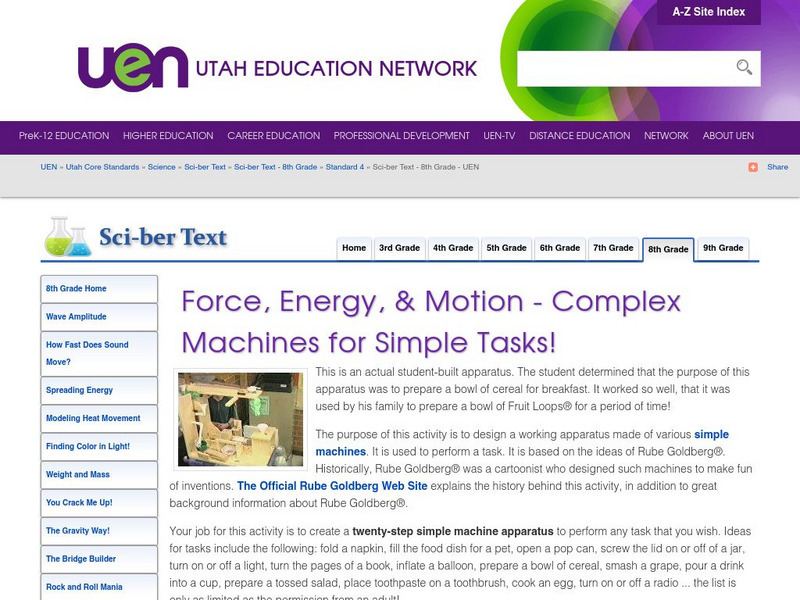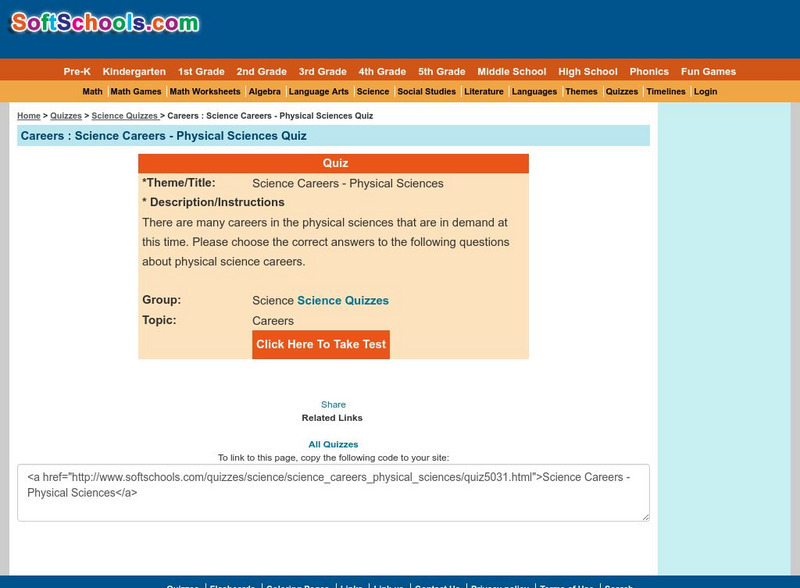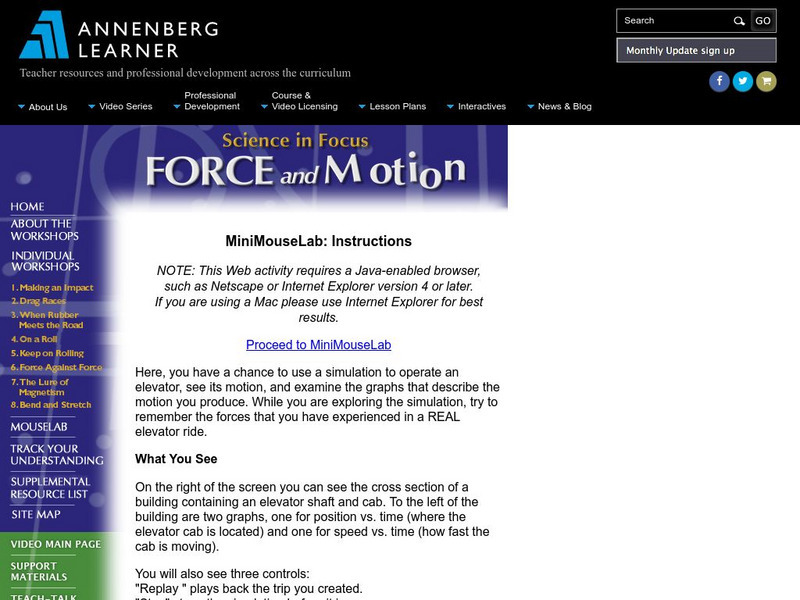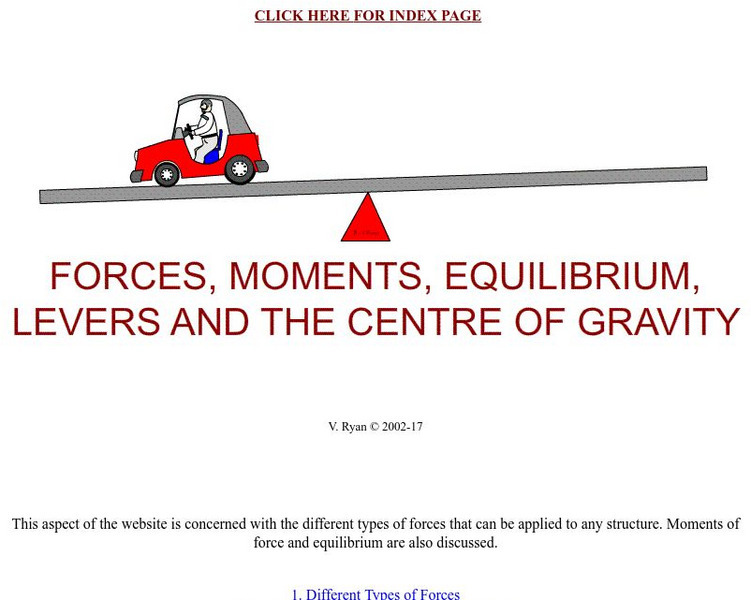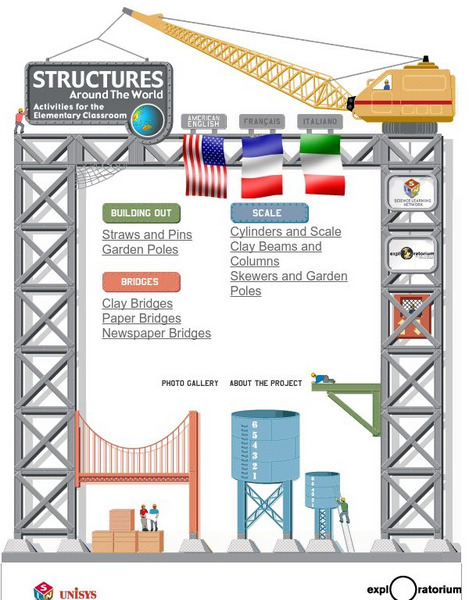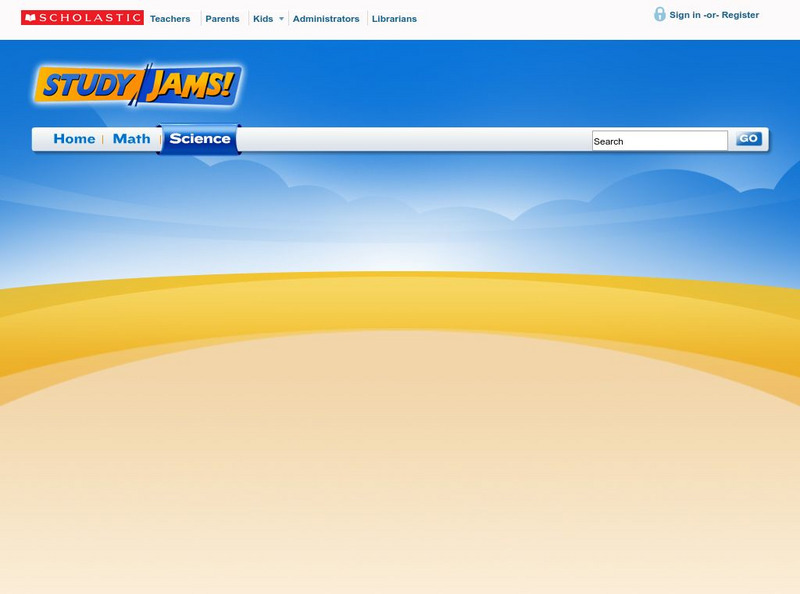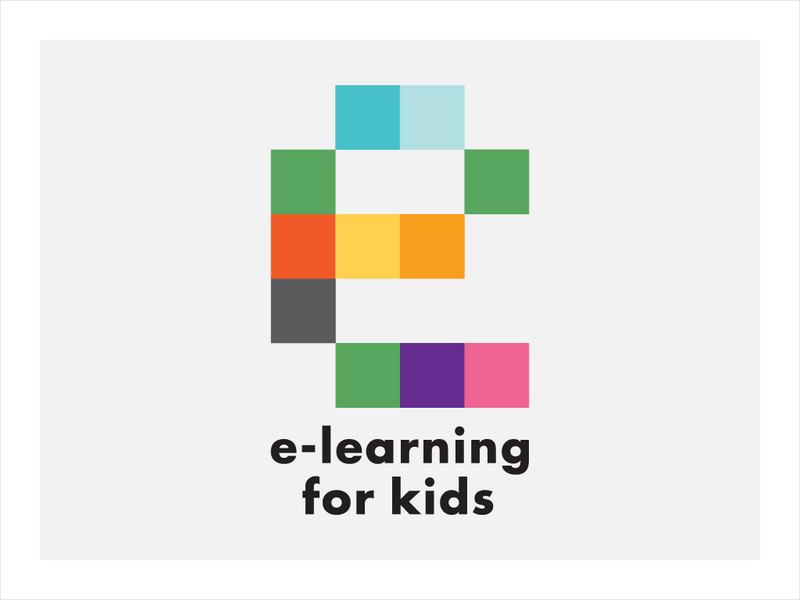Math Is Fun
Math Is Fun: Apparent Weight
Apparent weight is explored in this tutorial. Definitions and examples are provided.
Utah Education Network
Uen: Force, Energy, and Motion: Complex Machines for Simple Tasks!
Designed for Grade Eight, this collection of lessons provides information, examples and quizzes related to simple machines. Elementary students studying this topic will find this site informative as well.
Soft Schools
Soft Schools: Physics Quizzes: Force, Mass Acceleration
Assess your understanding of force, mass and acceleration and the relationship amongst the three with this interactive multiple choice quiz. Immediate feedback is offered.
Soft Schools
Soft Schools: Physical Science Careers Quiz
Take an interactive quiz over physical science careers. After completing the quiz, check your score, and then revisit any incorrect question for further review.
Annenberg Foundation
Annenberg Learner: Mini Mouse Lab
Use a simulation to operate an elevator and see its motion. Examine the graphs that describe the motion you produce.
Other
Libros Vivos: Fuerzas en Equilibrio
This site has a simple introduction to equilibrium of force and moment of a force.
Technology Student
Technology Student: Forces and Moments
This site describes and illustrates the different forces that are applied to structures. A worksheet is also included on the page.
TeachEngineering
Teach Engineering: Mobile Forces
The application of engineering principles is explored in the creation of mobiles. As students create their own mobiles, they take into consideration the forces of gravity and convection air currents. They learn how an understanding of...
TeachEngineering
Teach Engineering: Skateboard Disaster
Students examine collisions between two skateboards with different masses to learn about conservation of momentum in collisions.
TeachEngineering
Teach Engineering: Catapults!
Students observe the relationship between the angle of a catapult (a force measurement) and the flight of a cotton ball. They learn how Newton's second law of motion works by seeing directly that F = ma. When they pull the metal "arm"...
TeachEngineering
Teach Engineering: Glue Stick Activity
In this activity students will use hot glue gun sticks to show tension, compression and torsion.
TeachEngineering
Teach Engineering: Forces and Graphing
This activity can be used to explore forces acting on an object, to practice graphing experimental data, and/or to introduce the algebra concepts of slope and intercept of a line. A wooden 2x4 beam is set on top of two scales. Students...
Open Door Team
Open Door Web Site: Physics Equilibrium of Forces
The process of finding the magnitudes of the components of a force, called resolving the force, is explained at this site.
NASA
Nasa: Weight and Balance Forces Acting on an Airplane
The effects of forces exerted on an airplane wing are discussed both conceptually and mathematically. Illustrations and sample problems and solutions are provided.
Physics Classroom
The Physics Classroom: Free Fall and Air Resistance
This lesson in high school physics on Newton's Second Law of Motion provides a discussion of free fall and air resistance, and answers, "Why do objects which encounter air resistance ultimately reach a terminal velocity?" and "In...
Museum of Science
The Museum of Science: Sketch Gadget Anatomy
The Museum of Science provides this site that shows the activity in which students sketch all the elements of a compound machine describing each component's function. Also includes an extension activity for homework.
Museum of Science
The Museum of Science: Classroom Activity Be Inventive!
Student activity that requires the design, construction, and testing of a compound machine to solve a problem in their environment.
Georgia State University
Georgia State University: Hyper Physics: Earth Orbit Velocity
A discussion and statement of an equation for orbital speed. An interactive JavaScript form allows the user to investigate the relationship between orbital height and orbital speed. A very good opportunity to practice and receive...
Exploratorium
Exploratorium: Structures Around the World
How does that bridge stay up? What are the forces acting on that column? This site helps students understand how structures can be built by having them build their own. Also provides images of real structures for kids to compare with...
Scholastic
Scholastic: Study Jams! Science: Energy, Light and Sound: Magnetism
A slideshow and a short multiple-choice quiz on the basic concepts and vocabulary of magnetism.
E-learning for Kids
E Learning for Kids: Science: Seychelles: What Is a Force?
Cody the tour guide is learning about forces on the island. Try to help him learn about pushing and pulling.
Science Education Resource Center at Carleton College
Serc: How and Where Things Move
Students will understand that objects move in many ways, and it takes a forces (pushing or pulling) to move them.
Science Education Resource Center at Carleton College
Serc: Mother Nature's Funnest Play Things: Magnets
For this experiment, students will investigate magnets and how they work. They will understand that two like poles "repel" while opposite poles "attract." They will also observe how a natural force is created by two magnets and answer...
E-learning for Kids
E Learning for Kids: Science: Alexandrian Lighthouse: What Is a Force?
Learn to identify when a force is being exerted, the different types of forces, and the size and direction of a force.



